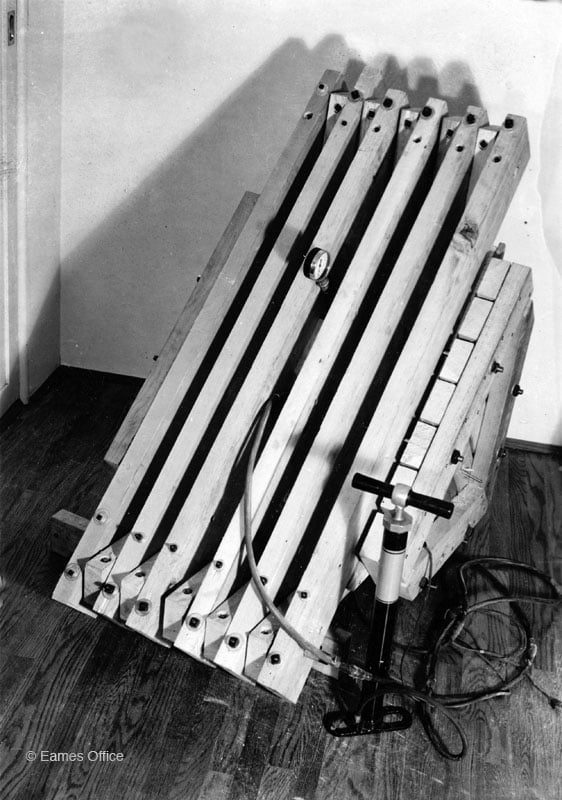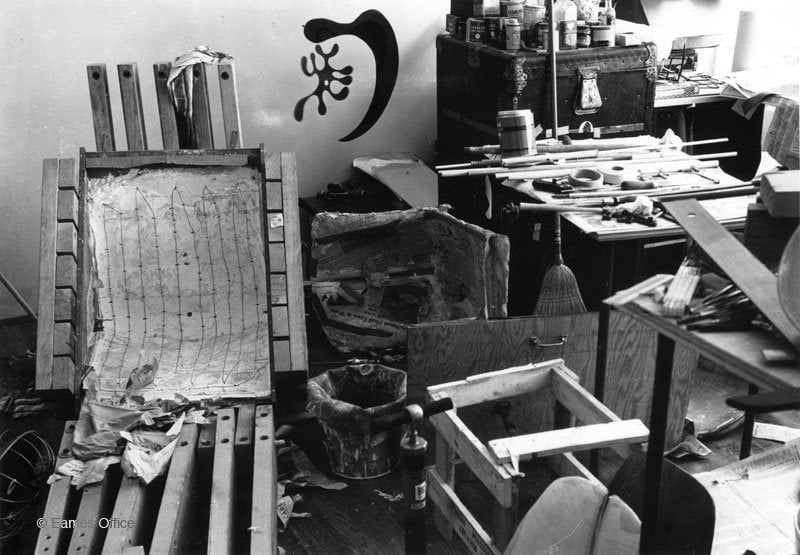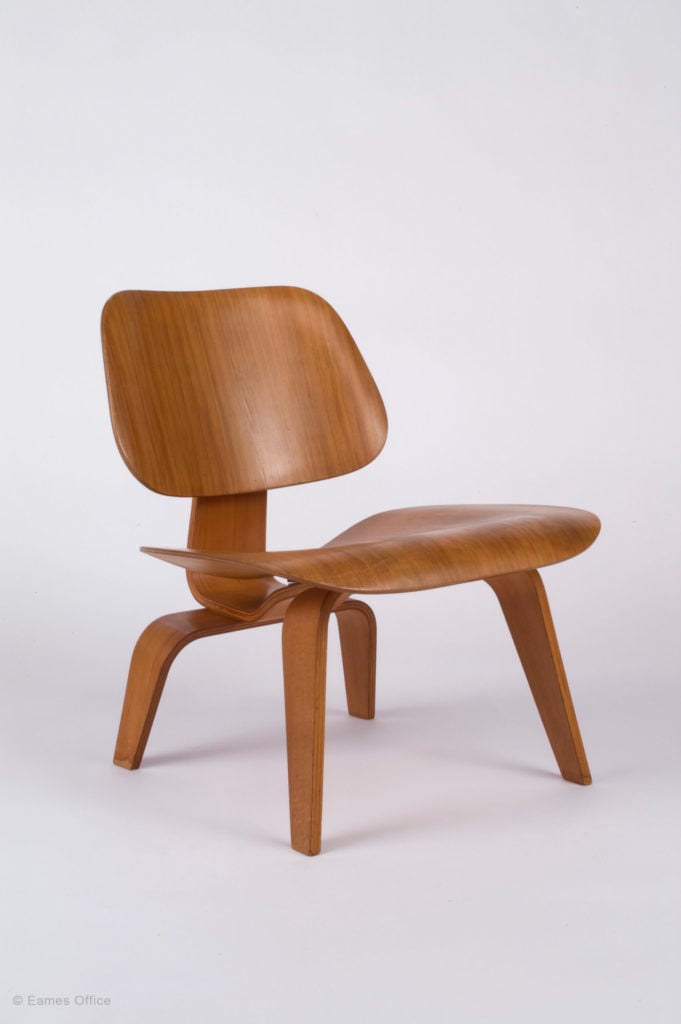Eames Kazam! Machine
On January 8, 1942, Elliot Noyes wrote Charles Eames in frustration, explaining that “the whole project seems to be dribbling off into nothing because of war priority pressure; no more rubber, no more plywood.” The project he referenced was the 1941 Organic Design in Home Furnishings competition held by the Museum of Modern Art. While Charles and Eero Saarinen won first place in Seating for their Organic Chair, they still hadn’t achieved their goal of mass production, and US involvement in World War II put their project on the back shelf.
In his book An Eames Primer, Eames Demetrios says of the Eames Kazam! machine, “It had a curving plaster mold with energy-guzzling electrical coils running through it. Charles long remembered the terror of climbing a power pole by their apartment to poach enough electricity from the transformer to run the Kazam! machine, and the growing conviction he would electrocute himself.”
Here is how their magical machine worked: They started the process by placing a sheet of veneer into the Eames Kazam! machine mold, and then they added a layer of glue on top of it. They repeated this process five to eleven times. Then, they used a bicycle pump to inflate a rubber balloon after the machine had been clamped shut, and the balloon pushed the wood against the form. Once the glue was set, Charles and Ray released the pressure and removed the seat from the mold, “ala Kazam!—like magic.” (Hence the name.) Finally, they used a handsaw to obtain the finished shape and hand-sanded the edges to make them smooth.
The Eameses journey to discover the most honest use of molded plywood took several years of trial and error, but the knowledge gained from the Kazam! machine readied them for many future design challenges. Five years of hard work eventually led to their Eames LCW, hailed by Time Magazine as “The Chair of the Century;” however, in that time period, their learning-by-doing process also brought many other creations to life, from body splints to airplane stabilizer tails, to plywood sculptures. The wealth of experience gained and products developed from the Kazam! machine is truly remarkable.


